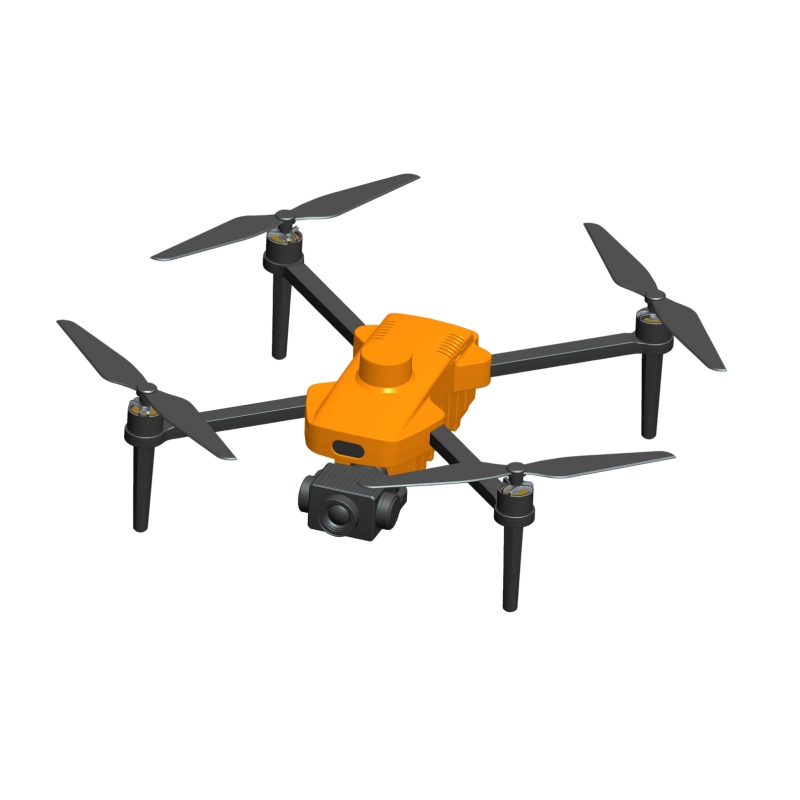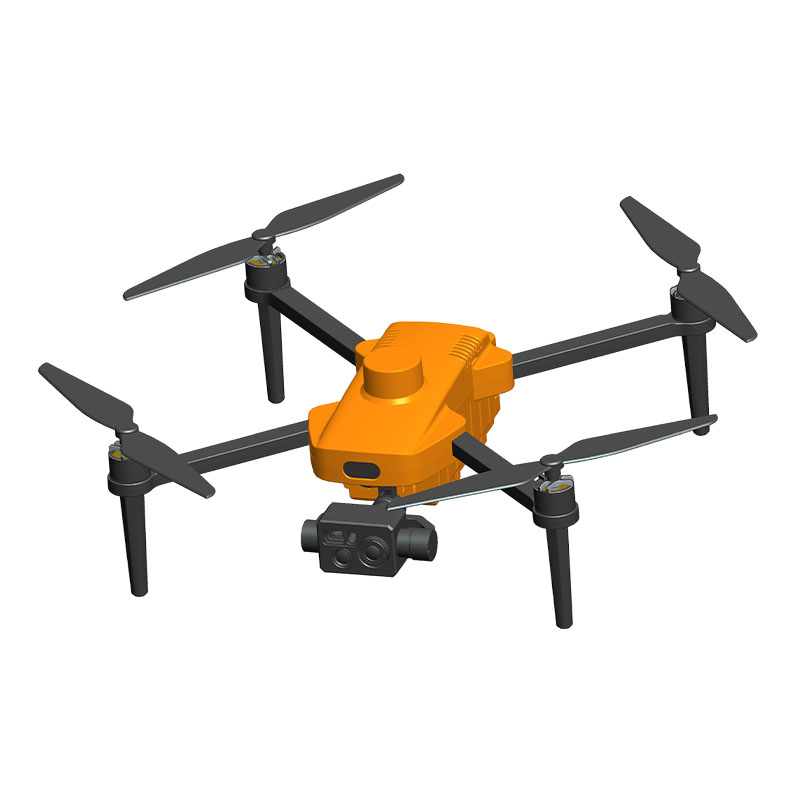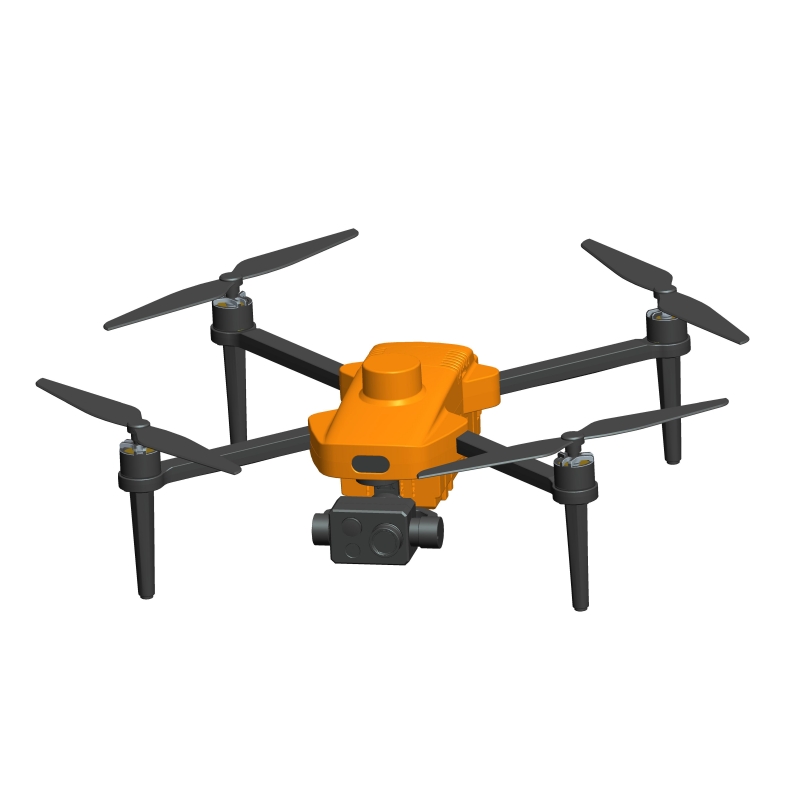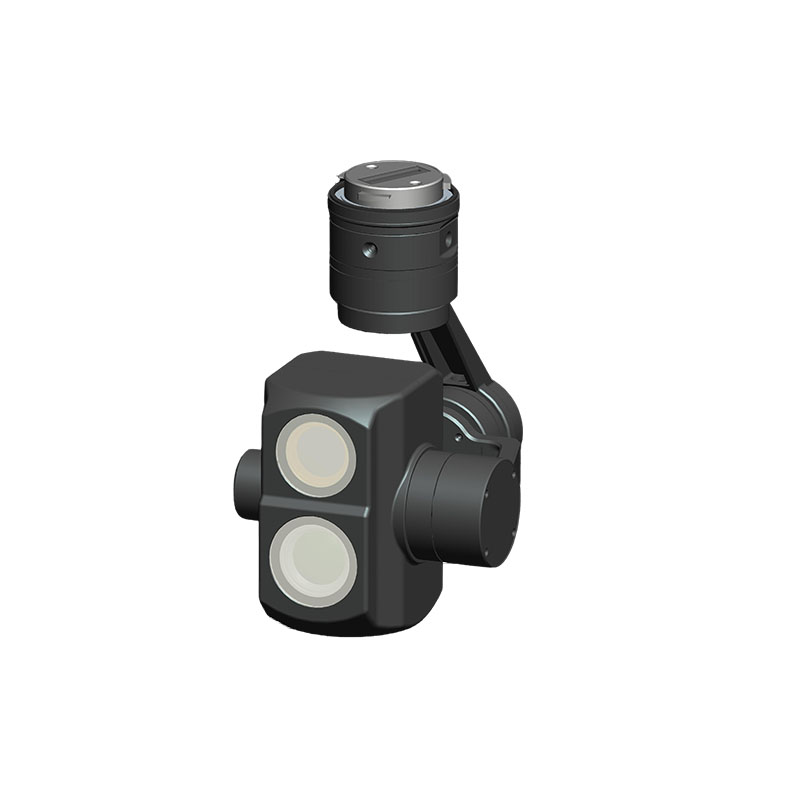How does the light source switching logic of a three-color light inspection quadcopter UAV adapt to the lighting requirements of different inspection scenarios?
Release Time : 2025-08-18
The light source switching logic of the three-color light inspection quadcopter UAV is the core mechanism for ensuring lighting adaptability in various inspection scenarios. Ambient lighting conditions often vary significantly across various inspection tasks, such as strong daylight, low nightlight, and varying indoor and outdoor lighting conditions. These variations directly impact the three-color light inspection quadcopter UAV's accuracy in identifying target defects. The light source switching logic uses a pre-set algorithm and sensor feedback to dynamically adjust the three-color light combination, brightness output, and spectral characteristics to consistently match the lighting requirements of the current scene, providing stable and effective auxiliary lighting for the inspection camera.
The light source switching logic first achieves basic adaptation through ambient light sensing. The three-color light inspection quadcopter UAV's onboard light sensor monitors the scene's light intensity, color temperature, and other parameters in real time. This data is transmitted to the control system, and the light source switching logic uses this information to determine whether auxiliary lighting is necessary and select the appropriate lighting mode. For example, in daytime outdoor scenes with abundant natural light, the logic may reduce the brightness of the three-color light or only activate light sources with specific spectrums to avoid reflections in strong sunlight. At night or in dark environments, however, the light source brightness is automatically increased, using a combination of multiple colors to enhance the contrast between the target and the background, ensuring that the camera can clearly capture details. This real-time adjustment based on environmental perception is the foundation for the light source switching logic to adapt to different scenarios.
The material characteristics of different inspection targets require the light source switching logic to perform targeted spectral adaptation. Different materials, such as metal, plastic, and concrete, have different light reflection and absorption properties, resulting in dramatically different imaging results under the same lighting conditions. The light source switching logic automatically switches the three-color light spectrum combination when specific materials are detected, based on a pre-set database of target materials. For example, for highly reflective metal surfaces, the logic may reduce the proportion of blue light and increase red light output to reduce reflections. For dark concrete structures, the logic may increase the brightness of green light to enhance the visibility of defects such as surface cracks. This material-specific spectral adjustment enables the light source to better highlight defect characteristics and adapt to the inspection needs of different targets.
The spatial characteristics of the inspection scene also influence the adaptive strategy of the light source switching logic. In open outdoor scenes, where light spreads over a wide range, the light source switching logic may select a wide-angle lighting mode. This utilizes the coordinated output of the three-color light source to expand the illumination coverage, ensuring that the target remains effectively illuminated during the mobile inspection. In confined spaces such as indoor spaces or equipment gaps, the logic switches to a focused lighting mode, concentrating the light source's brightness on a localized area to avoid energy waste and interference caused by light diffusion. Furthermore, to account for the differences between high-altitude and low-altitude inspections, the logic adjusts the light source's projection angle and intensity to ensure uniform coverage of the target at varying distances, ensuring consistent image quality.
The dynamic lighting changes during inspections rely on the light source switching logic's rapid response capabilities. During mobile inspections, the three-color light inspection quadcopter UAV may frequently traverse areas of alternating light and dark, such as those in the shadows of buildings and areas of direct sunlight. During these conditions, lighting conditions can change significantly over a short period of time. Light source switching logic must be able to rapidly analyze changing lighting trends and proactively adjust light source parameters to avoid image blur or missed defects caused by sudden changes in lighting. This dynamic response relies not only on real-time sensor data but also integrates the three-color light inspection quadcopter UAV's flight path planning to predict the lighting characteristics of the upcoming scene. This proactive adjustment of the light source ensures a continuous inspection process.
Energy-optimized light source switching logic is also crucial for adapting to complex inspection scenarios. Different lighting scenarios require varying light source brightness and operating time. The logic intelligently adjusts the power output of the three-color light while ensuring optimal lighting. For example, it automatically reduces light source power in brighter lighting conditions to reduce energy consumption. During extended nighttime inspections, it dynamically adjusts light source brightness in a pulsed mode to ensure optimal lighting while extending battery life. This balanced design between energy consumption and performance enables the three-color light inspection quadcopter UAV to maintain stable inspection capabilities in diverse lighting scenarios, preventing tasks from being impacted by insufficient power.
The user-defined light source switching logic further enhances adaptability to specialized inspection scenarios. For specialized inspection scenarios with unique lighting requirements, such as precision inspection of specific industrial equipment, users can preset light source switching parameters through the system, defining the spectral combination, brightness level, and switching trigger conditions for specific scenarios. The logic stores these customized settings and automatically activates them when corresponding scene features are detected, meeting personalized lighting needs. This flexibility enables the light source switching logic to adapt not only to conventional scenarios but also to complex and changing specialized inspection environments, enhancing the comprehensive inspection capabilities of the three-color light inspection quadcopter UAV.







